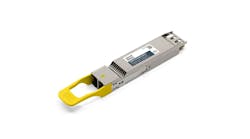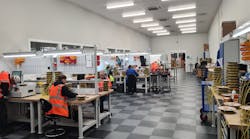Latest from Fiber Installation/Deployment
Fiber Deployment Innovation STILL Required
Field Strategies Require Continuous Evolution
The fiber optics market worldwide is currently predicted to grow from last year’s figure of $4.5 billion to around $11.1 billion by 2030—a compound annual growth rate (CAGR) of around 4.6% over that period. In the USA alone, fiber optics market revenue will reach $1.6 billion by 2025, up from $947 million in 2014. (Source: https://www.precedenceresearch.com/fiber-optics-market)
The market is being driven by the 5G revolution and the Internet of Things, with rising demand for smartphones, connected wearables and tablets driving factors. The global 5G infrastructure market is projected to reach $496.6 billion by 2027, at a CAGR of 106.4% over seven years to that year. (Source: https://us.hitrontech.com/learn/key-trends-shaping-the-us-fiber-market/)
“These opportunities point to a once in a generational opportunity to bring equality of access for millions of Americans. Yet the opportunities can only be met if we focus on future-proofing the network via innovative FTTH and FTTX field deployment solutions that work even better.”
In addition, broadband network architectures such as Fiber-to-the-Home (FTTH), Fiber-to-the-Premises (FTTP), plus Fiber-to-the-Cabinet (FTTC) and Fiber-to-the-Building (FTTB) have rapidly escalated the demand for fiber optic networks, meaning the demand for fiber optic cables is sky high.
Here in the US, the next 12 months will be a game changer for fiber deployment.
According to the Fiber Broadband Association (FBA), more than $100 billion in public funding will be invested in broadband networks to connect both the unserved and underserved in rural and urban America.
Grants being awarded by the Broadband Technology Opportunities Program (BTOP) and State Broadband Initiative (SBI) for infrastructure projects also reflect the booming times. (Source: https://www2.ntia.doc.gov/infrastructure) The billions being offered in grants include:
- $20 million for the South-Central Mississippi Broadband Infrastructure Project.
- $93.8 million for Access Connecticut: Expanding the State’s Education and Public Safety Network.
- $126 million for the West Virginia Statewide Broadband Infrastructure Project.
- $66 million for the Connecting Appalachian Ohio Middle Mile Consortium.
These opportunities point to a once in a generational opportunity to bring equality of access for millions of Americans. Yet the opportunities can only be met if we focus on future-proofing the network via innovative FTTH and FTTX field deployment solutions that work even better.
To achieve real future-proofing, there is no point in focusing on the capital side at the expense of the maintenance side. Here is a simple example. If I was to build a house in the middle of a field, I would have the opportunity to lay the best fiber straight to that home.
But I don’t just want to focus on my needs today. In 10 years, I may have set up a business and base my office at that home with staff and my broadband expectations may have gone from 1G to 100G.
By that time, I could have neighbors who’ve built around me. My home could also be surrounded by businesses, utilities such as water, gas, and electricity with underground cabling. In other words, I would need to be served by a system that delivers the opportunity for quick, easy upgrades that deliver my needs without a costly overbuild—and angry neighbors.
Now multiply this need exponentially and throw in the fact that much of the fiber will need to work above as well as below ground to cover the vast geographical expanse of the US. Such scale requires materials that are better than standard. Therefore, we must transform products that have been around for years into products that deliver even better.
Take for instance, traditional multicell ducts that have thin inner ducts with reinforced skins. These products can require additional protection when used with enclosures. The newer generation of multicell ducts have strong inner ducts and a thin sacrificial sheath, making joining and branching a task that can be done in seconds rather than minutes. This iteration of the product requires less precision and training for blowing fiber therefore it’s an easy system for field labor forces. This is beneficial given the labor challenges our industry faces.
The next step toward even greater transformation is evolving microcell ducts to provide greater protection for the fiber housed in them while improving the ducts’ flexibility. Inverting this concept means creating a thick wall duct with a thin wall sheath. This not only adds greater protection to the fiber but gives microcell ducts the flexibility to deliver blown fiber to homes. Emtelle has done just that. The evolution is necessary because in 2023 we expect to see blown fiber solutions deployed with microcables of 12 to 24 fibers. That could leave spare microducts for future upgrades without putting a shovel in the ground.
This year will be an exciting year for the US. At the moment, public and private funding is in the process of being distributed to help better meet the broadband needs of every household and business in the US. Clearly, fiber is the transmission medium to meet that goal.
The next step is evolving fiber deployment solutions to help those states, network providers and municipalities that have secured the coveted funding. The latest iteration of multicell duct evolution is one example of improving a product that works and making it work even better for the objective at hand.

Scot Bohaychyk | Solutions Manager, Emtelle
Scot Bohaychyk is Solutions Manager for Emtelle in the US and Canada. He has more than 40 years of experience in communications solutions. Early in his career in telecoms, he was assigned to the White House Communications Agency, where he provided communications infrastructure support for President Ronald Reagan and his staff both in Washington and when travelling abroad. For more information, please email [email protected] or visit www.emtelle.com.
You can also follow Scot on Twitter: https://twitter.com/Sbohaychyk. Follow Emtelle on Twitter: https://twitter.com/EMTELLE, LinkedIn: https://www.linkedin.com/company/emtelle/, Facebook: https://www.facebook.com/Emtelle, and YouTube: https://www.youtube.com/user/Emtelle1.
Emtelle is opening a new facility in Fletcher, North Carolina, in 2023.






